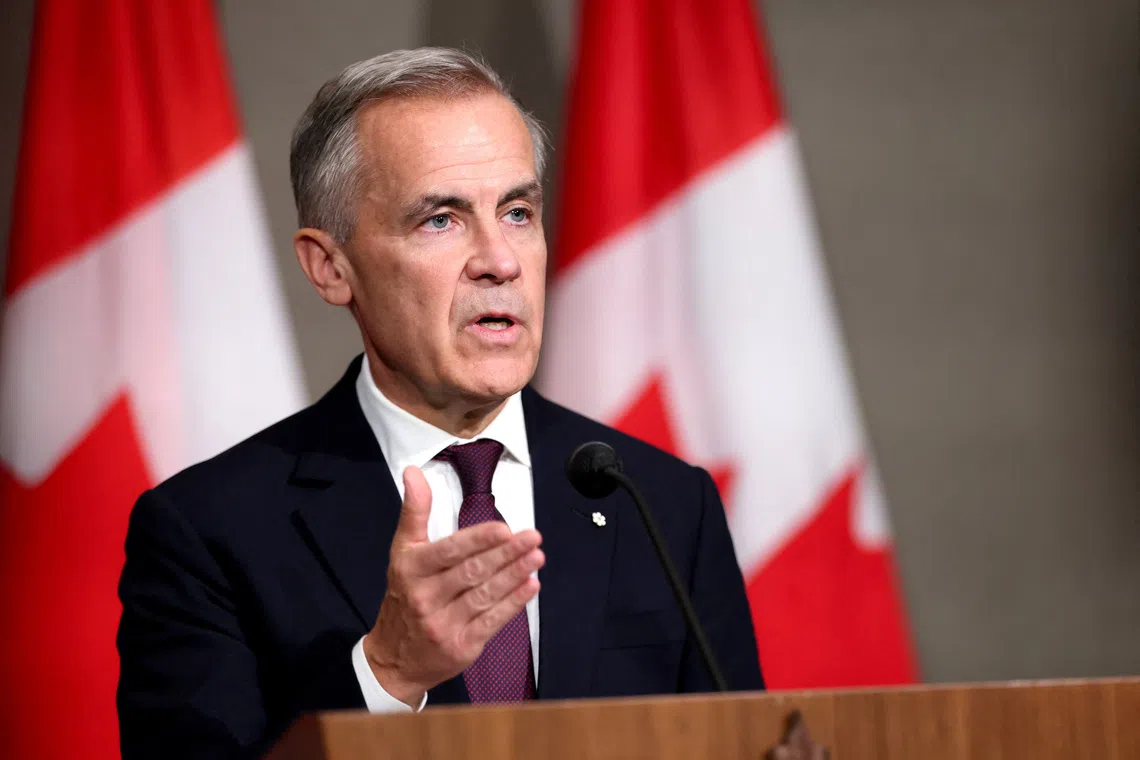Canada to poach H-1B visa holders, international researchers
Sign up now: Get ST's newsletters delivered to your inbox

Canada's Prime Minister Mark Carney's first budget unveiled a plan to attract international talent.
PHOTO: REUTERS
Follow topic:
The Canadian government is set to launch special initiatives to attract top international researchers and H-1B visa holders, while slashing the number of foreign students it plans to bring into the country each year.
Prime Minister Mark Carney’s first budget unveiled a plan to attract international talent, earmarking C$1.7 billion (S$1.5 billion) to recruit more than 1,000 skilled researchers.
“The expertise of these researchers will help advance our global competitiveness and contribute to the economy of the future,” the budget document said.
The government also plans to launch an “accelerated pathway” for H-1B visa holders in the coming months. This follows US President Donald Trump’s decision to increase fees for H-1B visas to US$100,000
However, the government is maintaining tight controls over the number of immigrants it lets into the country after a surge in population growth in recent years.
The new immigration plan has a target of bringing in 380,000 permanent residents per year from 2026 through 2028.
But it is cutting the number of temporary residents allowed to 385,000 in 2026 and 370,000 for the following two years.
This reflects more than a 40 per cent reduction from 2025.
Driving that decrease is a sharp fall in the number of new study permits the government plans to issue. Those targets have been reduced to 155,000 in 2026 and 150,000 in both 2027 and 2028.
That is down from the targets set by the former government of Mr Justin Trudeau, which projected 305,900 permits annually for the period from 2025 to 2027.
Universities Canada said in a statement that it “recognises the government’s efforts to build a sustainable immigration system that welcomes those seeking to study at Canada’s world-class universities, but the plan must match this government’s talent and economic agenda”.
A report by Desjardins, a Canadian financial firm, said bringing fewer people into the country “should support wage growth in the near term, as employers bid to attract fewer available workers”.
It will likely slow population growth further, compared with previous targets.
However, Desjardins said its revisions to forecasts for gross domestic product growth are minimal.
“The slower population growth should ease shelter inflation, particularly in the rental sector, as temporary foreign workers and international students are likelier to rent. Lastly, the slower pace of population growth should help reverse Canada’s falling GDP per capita,” the report said.
The government is now aiming to reduce the share of non-permanent residents to less than 5 per cent of the population by the end of 2027, pushing out that goal by a year. The figure was 7.3 per cent on July 1. BLOOMBERG

